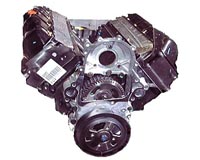 |
New York (AFP) Aug 11, 2009 Troubled US auto giant General Motors sought to trump Toyota by announcing that its Chevy Volt plug-in hybrid will save four times more fuel than the Japanese carmaker's Prius. The former world leader in auto manufacturing, now 60 percent owned by the US government, said Tuesday that it would begin production in late 2010 on its new electric sedan, which will be marketed in 2011. The Chevrolet Volt will be the "first mass-produced vehicle to claim more than 100 miles per gallon (42.51 kilometers per liter) composite fuel economy," GM boasted in a statement. It said the Volt, whose prototype was first unveiled in early 2007, was expected to achieve city fuel economy of at least 230 miles per gallon (100 kilometers per 1.02 liters), based on development testing using government fuel economy methodology for labeling for plug-in electric vehicles. Toyota's Prius, which was first introduced in the United States in 1997 and whose fourth generation vehicle was presented this year, gets 50 miles per gallon (21.26 kilometers per liter). The Japanese model was praised by analysts, while GM, like the two other Detroit giants Ford and Chrysler, were left biting the dust of eco-friendly Asian cars in the past several years. Technically, the Chevy Volt is more of an electric car than a hybrid. The car will have a dual engine, but "the gas engine does not propel the car, it will generate the energy to charge the battery," explained Michelle Krebs, an analyst with the research firm Edmunds.com. The Volt "will bring much more through the technology that it uses," said auto industry analyst Bertrand Rakoto of R.L. Polk & Co., pointing to the lithium batteries at the heart of its power system. "From the data we've seen, many Chevy Volt drivers may be able to be in pure electric mode on a daily basis without having to use any gas," said GM chief executive Fritz Henderson. The model is expected to travel up to 40 miles (64 kilometers) on electricity from a single battery charge, according to GM. Nearly eight of 10 Americans commute less than that distance, according to US Department of Transportation data. GM said the Volt may be able to extend its overall range to more than 300 miles (483 kilometers) with its flex fuel-powered engine-generator. "So, a vehicle like the Volt that achieves a composite triple-digit fuel economy is a game-changer," Henderson said. The company declined to provide a sales price for the Chevy Volt, but analysts estimate it will cost 40,000 dollars -- halfway between the low-cost hybrids, which sell for about 20,000 dollars, and more high-end models. That's still more than the sales price of an average sized sedan -- the most popular type of car on the US market -- which sells for around 25,000 dollars. Even if hybrids barely make a dent in the US auto market at a mere three percent, "it's a key segment for any automaker wanting to show the range of its products," Rakoto said. It's a "green" image GM is now more than ever keen to demonstrate, after spending a month in bankruptcy restructuring and having shed most of its dozen of brands except for Buick, Cadillac, Chevrolet and GMC. Diane Swonk, an analyst with Mesirow Financial, is among the skeptics of GM's aspiration to rival Toyota in technological advances. "I would be very surprised if Toyota hadn't developed this technology. This technology has been there for a while," she said. "It's one thing to have the technology; it's another one to bring it to the mass market." Krebs had doubts about the fuel economy figures cited by GM, noting that "we're learning from various experts, like battery makers, that the figures are not realistic." Share This Article With Planet Earth
Related Links Car Technology at SpaceMart.com
 Gasoline-Diesel Cocktail Makes For Clean Efficient Engines
Gasoline-Diesel Cocktail Makes For Clean Efficient EnginesMadison WI (SPX) Aug 12, 2009 Diesel and gasoline fuel sources both bring unique assets and liabilities to powering internal combustion engines. But what if an engine could be programmed to harvest the best properties of both fuel sources at once, on the fly, by blending the fuels within the combustion chamber? The answer, based on tests by the University of Wisconsin-Madison engine research group headed by Rolf Reitz ... read more |
|
| The content herein, unless otherwise known to be public domain, are Copyright 1995-2009 - SpaceDaily. AFP and UPI Wire Stories are copyright Agence France-Presse and United Press International. ESA Portal Reports are copyright European Space Agency. All NASA sourced material is public domain. Additional copyrights may apply in whole or part to other bona fide parties. Advertising does not imply endorsement,agreement or approval of any opinions, statements or information provided by SpaceDaily on any Web page published or hosted by SpaceDaily. Privacy Statement |